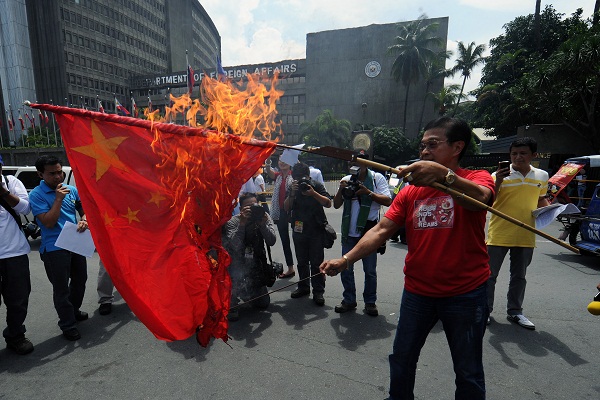Like the deserts of the Middle East, the barren islands of the South China Sea now loom as a new theatre of war. Asian countries, indeed America, too, are at odds over how to deal with this power-play by a rising China — if that’s what it is; or scramble for maritime minerals; or as recently witnessed in Chinese cities a resurgence of nationalism and loathing of Japan.
The South China Sea brings in China, Japan, Vietnam, Indonesia, Malaysia, the Philippines, little Brunei and unrecognized Taiwan. They represent the glittering success story of the developing world, the Tiger economies, the shared goal of wealth and education, the peaceful transitions to democracy — or at least away from violent jingoism and war that has blighted so much of Africa and the Middle East.
The sun-scorched, inhospitable rocks that have become global flashpoints are spread hundreds of miles apart in a horseshoe-shaped area subject to claims by many of the countries. They go by quaint names such as Spratlys and Paracels (or Sansha if you’re Chinese), where China says it’s setting up a military garrison.
Earlier this year, China and the Philippines staged a naval stand-off at Scarborough Shoal (or Huangyan Island) and, in August, Japanese activists planted their national flag on the Senkaku Islands (or Diaoyu), for which rioters smashed up Japanese cars and restaurants on the Chinese mainland.
Amid all this, America attempts to tread, on the one hand proclaimed peace-maker conjuring shades of the Middle East, on the other part provocateur with its shift of strategic focus to the Asia Pacific — in other words to stop unruly Chinese behaviour.
But China’s encroaching influence is not like fractious Islam, nor can it be compared to that of the old Soviet Union — despite the wishes of many old policy hands who yearn for the clarity and comfort of the Cold War.
China has its own momentum. Its confidence may appear to be propelled by new-found wealth, but it began long before the opening up of the economy in the 1980s or even the Maoist revolution of 1949. Indeed, the sense of purpose we are experiencing now reaches all the way back to 221 BC, when the warlord Qin Shi Huang conquered and unified the country, built the Great Wall and standardised currency, education and language to create a global power.
Qin Shi Huang’s tomb near the central city of Xian has become a UNESCO world heritage site. A million visitors a year travel to see the sealed wind-swept mound watched over by the magnificent army of life-size Terracotta Warriors that Qin built to protect his mausoleum.
The tomb itself has never been excavated, but it’s thought he designed it with jewel-embedded ceilings and rivers of mercury guarded by cross-bow warriors to ward off intruders. Apparently, he also ordered his living bodyguards, servants and concubines be sealed in the tomb with his body.
Qin was a hero of the ruthless and demonic Mao Tse-tung, who drove out the corrupt American-backed regime of Chiang Kai-shek in 1949. Mao went on to replicate many of Qin’s unification policies invariably involving mass loss of life and the stripping of human dignity.
Unforgiving of Japanese atrocities and the European colonisation at gun point of China’s coastlines, the Chinese government remains prickly and protective of sovereignty, which explains why issues such as Tibet and Taiwan are non-negotiable — as it seems, now, is the South China Sea.
Much of modern China — its skyscrapers and shopping malls — has been built on profits from trading with America. It is not, though, the Statue of Liberty, but Mao’s portrait that stills dominates Tiananmen Square, and he is often used an ideological benchmark of what it is to be Chinese. The fallen populist mayor of Chongqing, Bo Xi Lai, sent out morale boosting text messages to his citizens with quotations from Mao’s Little Red Book.
Whether or not Mitt Romney wins the US presidency, America’s line against China will almost certainly harden. There is talk of creating a strong Asia, a NATO-style alliance to ward off Chinese expansion.
There will be trade disputes and political rhetoric amid which the South China Sea will routinely be unfolded as a ‘hot war’ scenario.
It would be wise, therefore, that policy-makers in Washington and Europe visit the tomb of Qin Shi Huang and his army of Terracotta Warriors. At the very least, they will get an understanding of discipline and determination, even of military engineering with weapons that at the time were hundreds of years ahead of anything produced in Europe.
Humphrey Hawksley is the BBC’s former Beijing correspondent and author of Red Spirit Published by Endeavour Press






Comments